CR Flux Weight

CR Primary Energy spectra before weight
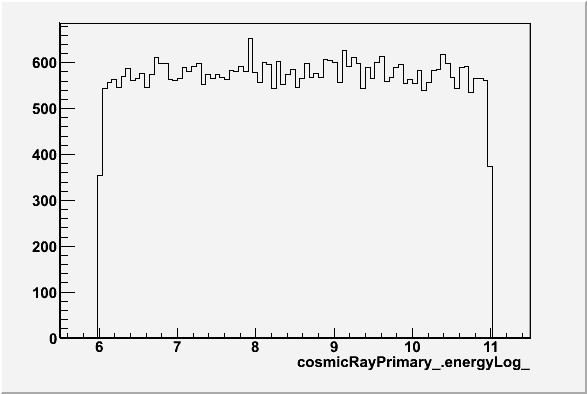
We compare,
1) CR primary energy vs. in-ice bundle energy
2) in-ice bundle energy vs. NPE
3) bundle energy at surface vs. bundle energy at detector depth
and fluctuations in 1) are taken into account in new empirical model.
Because proton produces larger fluctuation that iron, we sample fluctuation from the proton.
Fluctuation in 2) and 3) are taken into account to the simulation.
We found that 2) and 3) shows quite similar distribution between corsika and empirical model.
3) indicate that muon-bundle to single-muon approximation in the propagation in the earth leads a larger fluctuation and slight less energy loss (delta log (E) < 0.1 or so).
2) In-ice muon bundle energy and in-ice NPE show similar distribution, implying that at EHE regime in terms of NPE, muon bundle can be approximated as a single muon of the same energy.
Overall difference in event rate comes from differences in 1).
For both proton and iron do predict smaller fluxes than what we see from data NPE distribution.
Corsika iron/proton did not bracket the data.
Generally Iron predicts larger fluxes than proton.
The disagreement become larger for Iron when increasing CR Primary energy towards 10^20eV and proton doesn't show much energy dependence in differences.
(click here to visit topics of your interest)
|
Primary Cosmic Energy range is from 10^15eV to 10^20eV |
|
Program Chain: |
|
CR Flux Weight 
|
|
CR Primary Energy spectra before weight 
|
Relation between in-ice muon bundle energy and CR Primary energy
x:CR Energy, y:In-Ice muon bundle energy |
Proton 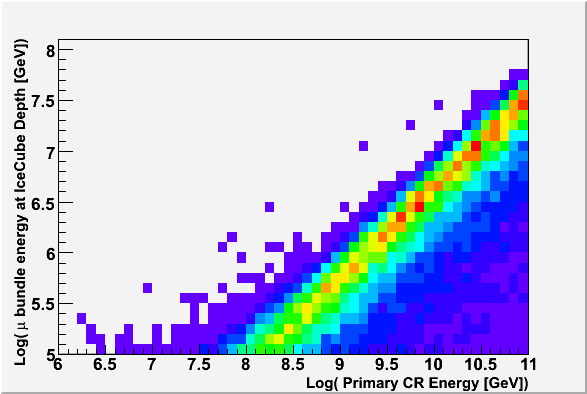
|
Iron 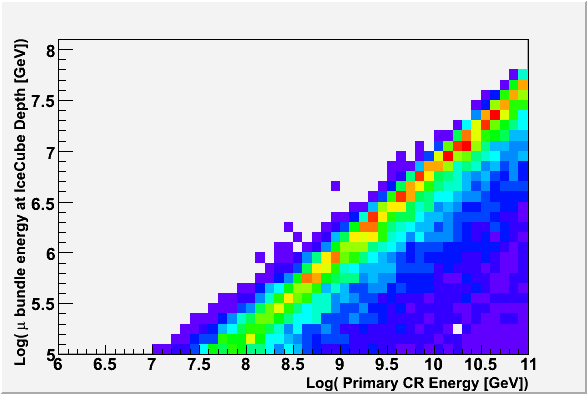
|
Empirical Model 1 without fluctuation 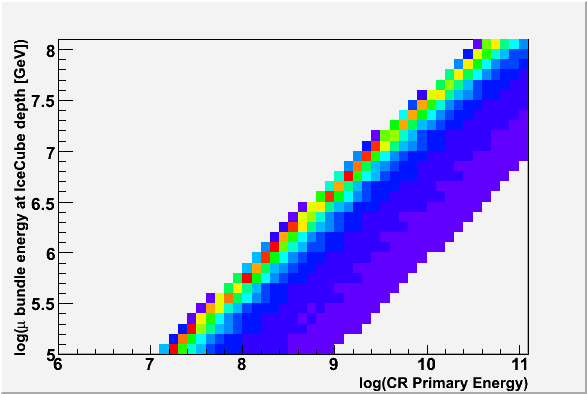
|
Empirical Model 1 with CORSIKA fluctuation included 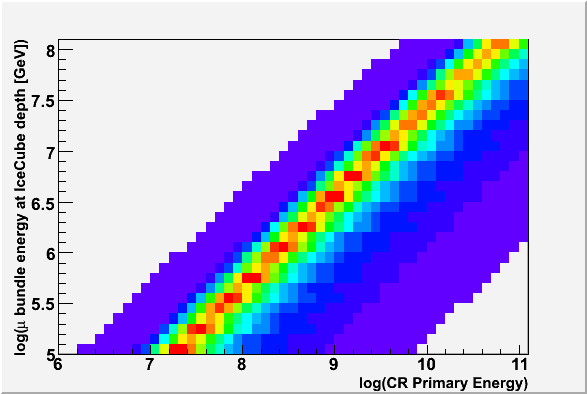
|
Slices at given in-ice bundle energies
|
x-axis is CR energy corresponding to given muon bundle energy at IceCube depth |
|
Slice At (InIce E)=5 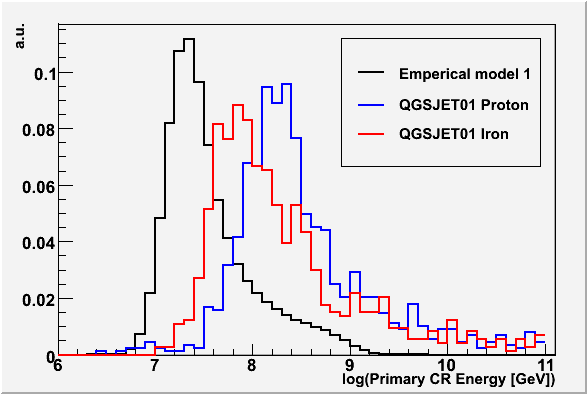
|
|
Slice At (InIce E)=6 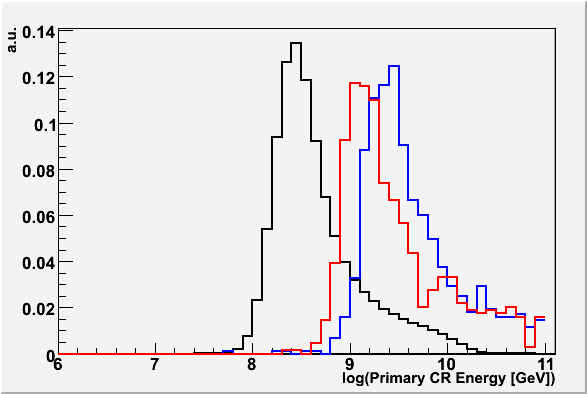
|
|
Slice At (InIce E)=7 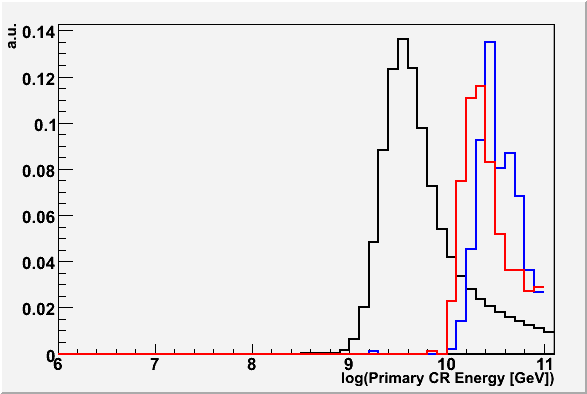
|
x:Surface muon bundle Energy, y:In-Ice muon bundle energy |

|
|
Slices at different surface muon bundle energy |
|
Surface energy at 10^6.0 GeV 
|
|
Surface energy at 10^7.0 GeV 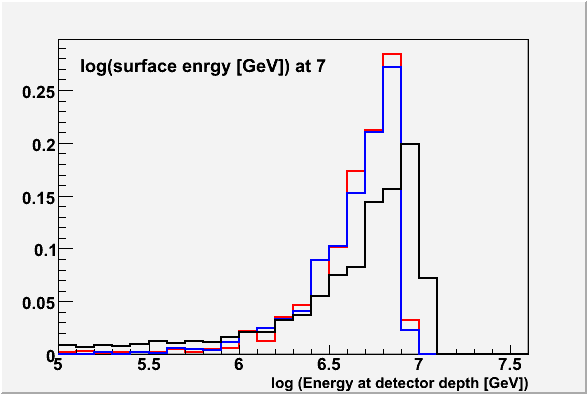
|
|
Surface energy at 10^7.5 GeV 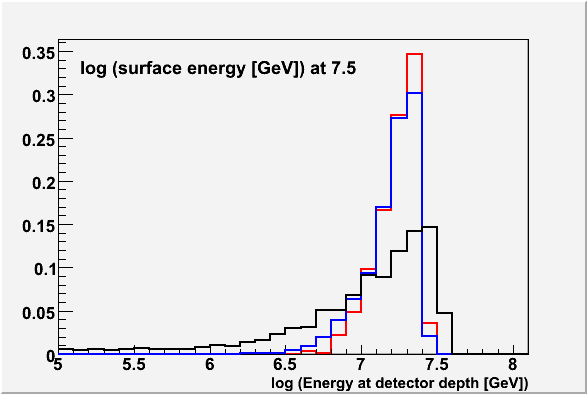
|
|

|
| Slices at different in-ice energy |
|
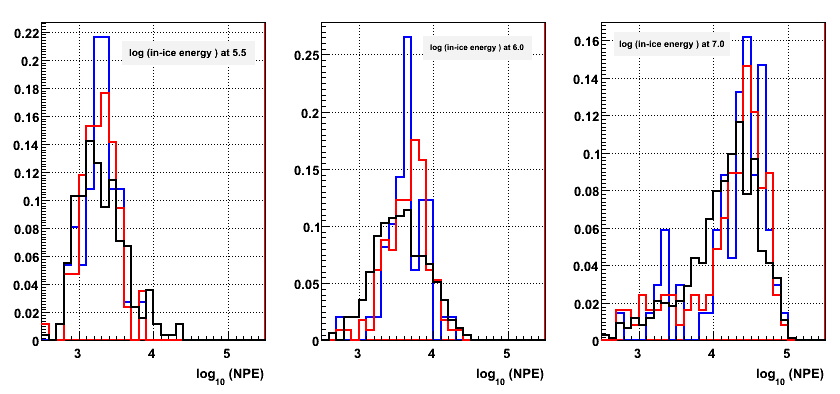
|
| Comments | Proton | Iron |
|---|---|---|
| x:cosmic-ray primary energy log, y:in-ice muon bundle multiplicity Number of muons with near detector energy (mmc cylinder 880m with hight 1760m) more than 1000 mus! |
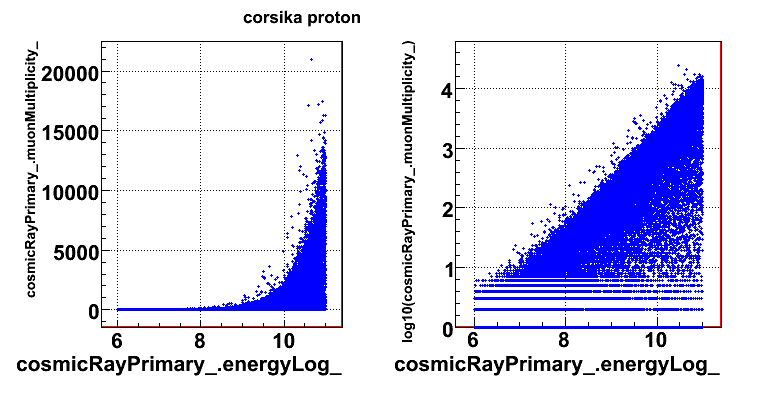
|
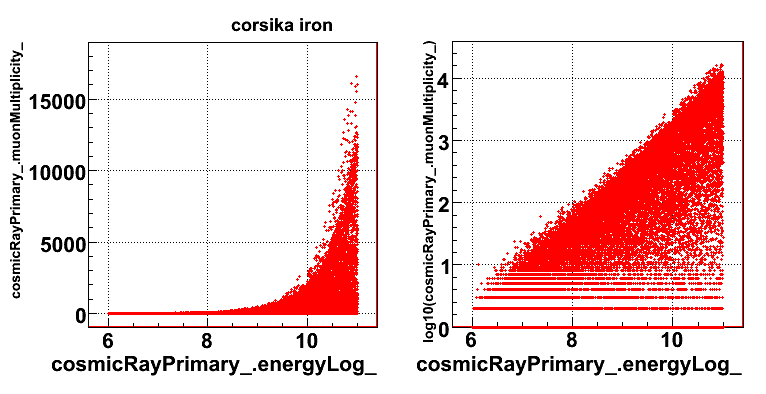
|
|
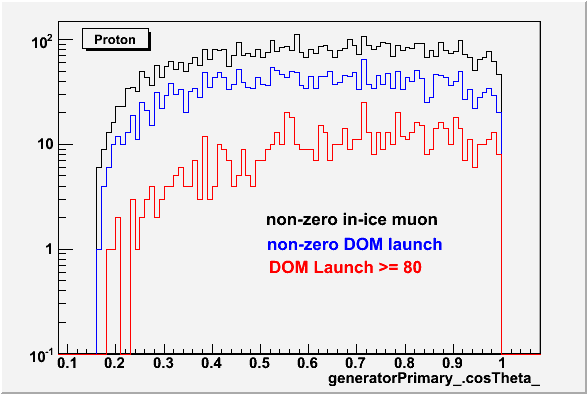
|
|
Each of the muon, more than 10000 in-ice, associated with bunches of cascades, this is not realstic task to CPU/memory computers, because the hit-constructor loops over DOMs and for each DOMs it loops over all the cascades and tracks. While in the loop, the low energy cascades neglected to create hits. Trials with the various threshold energy setting are compared. At low energy/NPE events the difference can be seen but at our BG study region ~ 10^3.5 or above the difference is about or less that 0.1 in log(NPE). 
|
Here thereshold energy of muons in CORSIKA is studied.
300 GeV (red)
1000 GeV (black)
2000 GeV (blue)
Note that at 10^20 eV, corsika with qgsjet01/300GeV threshold takes 2hour/event with madison CPU, this is very hard to simulate large number of events. With 1TeV E thershold, the time is a factor of ~5 reduced, ~20min/event. This is somehow manageable number.
Also at 10^20 eV CR primary, even with 2TeV energy threshold, multiplicity is larger than 10000, more than this I experienced resulting memory crash with 1G memory machine.
|
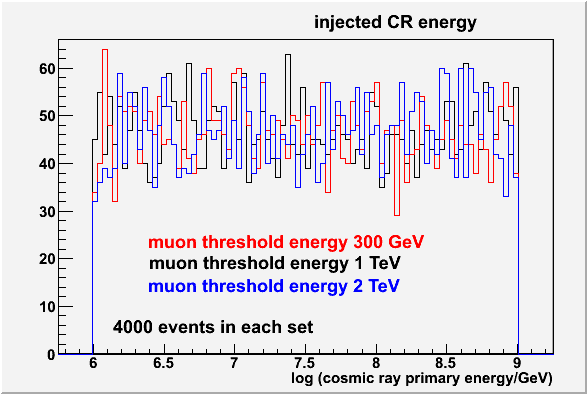
|
|
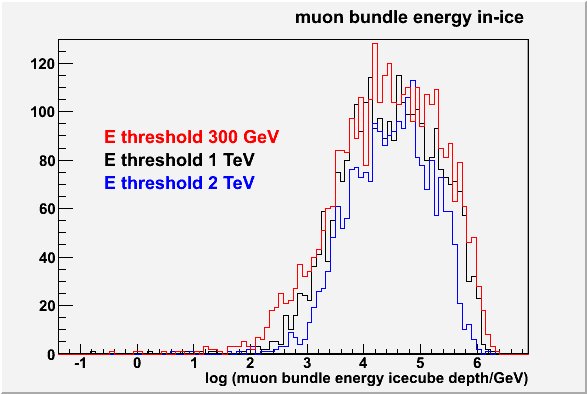
|
|
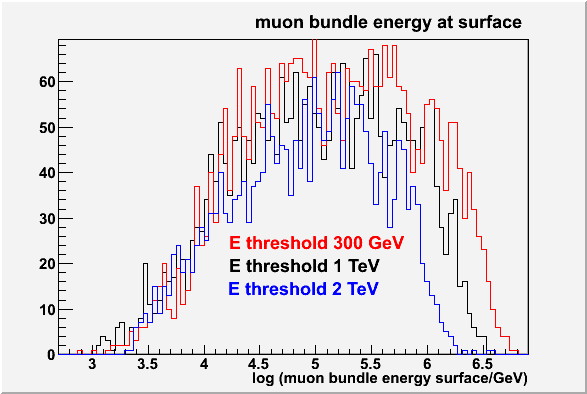
|
|
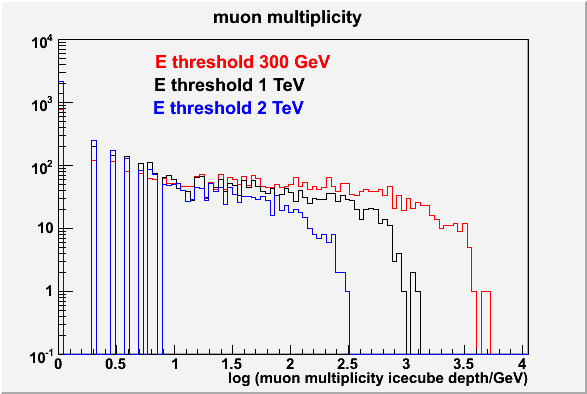
|
Following is for the case of larger icecube (defining cylinder of radius 880m and length1760m) in which muons are considered to be constitue of a bundle.
|
The total energy sum of muons at depth that enter a cylinder (radius=880 length=1760") around IceCube. 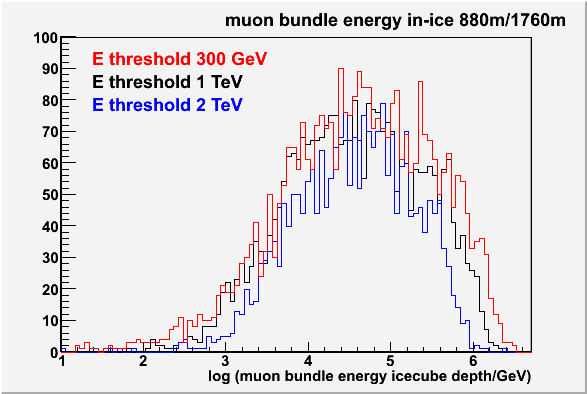
|
|

|
|
v
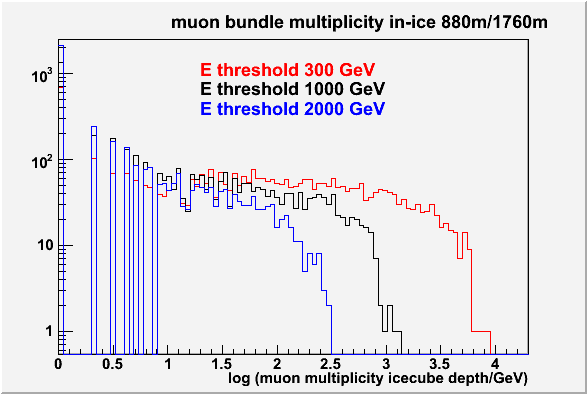
|
send your comments to: aya at hepburn.s.chiba-u.ac.jp